Intercepting is always better than blocking. We are going to look at what the definition of intercepting is before we give some practical ways of accomplishing that. Webster’s dictionary defines intercepting as “to stop, seize, or interrupt in progress or course or before arrival”. The best way to view intercepting is that last part of the definition, “interrupt”. Not only is the attack itself being interrupted, but the timing of your opponent should be as well. And that is the key, the timing. When timed properly your opponents attack will be nullified and you will be primed to launch a second attack (in theory before his second) or you would have already hit him. Now that we have addressed what intercepting as a concept let me provide you with 4 Ways to Intercept your opponents attacks using Wing Chun.
4 Ways to Intercept
Intercepting Fist

The first technique we will go over is the Intercepting Fist. Made famous by Bruce Lee, this technique is typically taught fairly early on in student’s training. The idea is to counter the opponents punch with a punch of your own. By keeping your elbow down and pressing from center mass you are elbow to offset your opponents strike. This can quickly be follow up a flurry of punches we refer to as Chain Punches. Keeping the strikes down the center you are able to maintain control of your centerline.
When you substitute a Paak Sao with an intercept you will find it can be much easier to deal with a second and third punch. Part of this is due to the fact that you are returning the opponents punch with a punch. They will be slightly less confident with their next punch as opposed to when you simple deflect their initial punch with a Paak. Second to that, the Intercept automatically covers your opposite side incase of a second attack. Whereas the Paak leaves you more open.
Turning Punch

The Turning Punch basically the other side of the same coin referring to the Intercepting punch. The Intercepting fist is typically used to refer to the lead hand being used with the lead foot to interrupt the opponent. This is illustrated in the first photo above.
Turning punch is simply using the the same structure but opposite hand to accomplish the same goal. Since the punch is coming from the back foot, the turning punch will have more power and torque then the straight Intercepting. However, much like the Paak punch, if not used properly, can leave you open on the inside for an attack.
Tan Sao

The Tan Sao is a very effective and sound way to intercept a strike. You have not only nullified the attack but you have also almost guaranteed a strike of your own. Tan and the actual punch are the exact same shape. The only exception is what the hand is doing at the end. You can see here in the photo the Tan Sao is an hand open towards the ceiling. By opening the hand the focus of the technique is diverted to the elbow. The Punch itself can be delivered to the head, or for a taller opponent you can strike the ribs.
Since the Tan extending through the strike towards your opponent, it makes stopping a second strike fairly straight forward. You can transition to a Paak Punch if the Strike is down the center. Or, you can continue pressing forward with a Bui Sao against a hook punch.
Paak Punch

Our last technique for this article on intercepting attacks is the Paak Punch. Clearing the attackers hit with Paak good, but combining it with straight punch is better. Since the Paak is coming off of the back foot there is a lot of power and structure with this counter. The Paak is also quite diverse.
When used, you can use the Paak to press forward and crush the attackers structure. You can guide his hand downward if he is taller. You can also use it to setup a baiting for the second punch.
Bonus: The Paak Punch is also a great attack to throw in a kick along with it. By doing this you maximize Wing Chun’s ability to use multiple weapons at once. You can see here in the photo, Sifu Justin used the Paak, Punch, and Kick. He uses the kick just before the punch clears the arm to finish the attack.
Final thoughts
When it comes to Intercepting timing is everything. You can have GREAT structure, technique, and power. But, if you do not practicing your techniques in LIVE sparring scenarios you will get hit no matter how good you think you are. There is no substitute for hard work, and good punches to the face. Train hard and never give up.


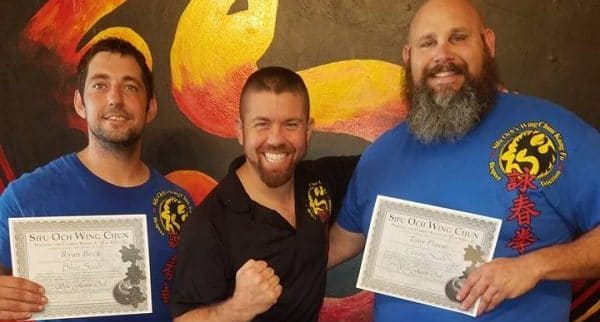
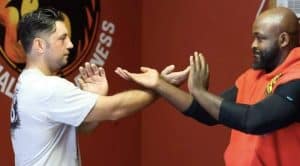 When I first started training with Sihing Garret in Tampa, I was the only regular student. His boxing background, plus his time training in Wing Chun really set his skills apart. After the first class, I told myself, that no matter what, I would commit to training for at least one year, at that point I would re-evaluate. Not even two months later, I came to the realization that Wing Chun was in my soul and I was hooked.
When I first started training with Sihing Garret in Tampa, I was the only regular student. His boxing background, plus his time training in Wing Chun really set his skills apart. After the first class, I told myself, that no matter what, I would commit to training for at least one year, at that point I would re-evaluate. Not even two months later, I came to the realization that Wing Chun was in my soul and I was hooked. The only limitation Wing Chun has to personal growth, is people’s willingness to grow. It’s not always easy to train. Let’s be honest, it’s hard work. After a long and hot day at my job, I don’t always want to train. We can always find a reason. I will never forget my Sifu once said, “instead of an excuse, just say it’s not a priority.” This is something I strive to apply to all aspects of my life. The interesting part is that once I am at class, I am always glad that I went. This is true in life, it’s never as bad as we thought it was going to be.
The only limitation Wing Chun has to personal growth, is people’s willingness to grow. It’s not always easy to train. Let’s be honest, it’s hard work. After a long and hot day at my job, I don’t always want to train. We can always find a reason. I will never forget my Sifu once said, “instead of an excuse, just say it’s not a priority.” This is something I strive to apply to all aspects of my life. The interesting part is that once I am at class, I am always glad that I went. This is true in life, it’s never as bad as we thought it was going to be.


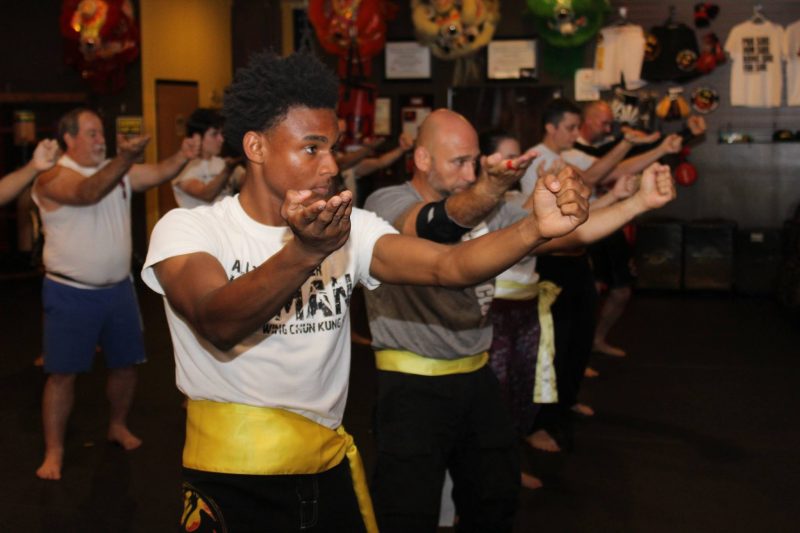
 As years went on I became a black belt at the same martial arts school but under a different instructor who’s name is Master Gary Hernandez. Around that time is when I watched the first Ip man movie. That’s when I wanted to start to learn any new style of Kung Fu, but Wing Chun in particular. Something terrible occurred I was working towards my 2nd degree black belt. A near fatal incident happened to my mother and now ex-stepfather. Once that happened, my training drastically went downhill. I wasn’t wanting to throw a single punch or block a single strike.
As years went on I became a black belt at the same martial arts school but under a different instructor who’s name is Master Gary Hernandez. Around that time is when I watched the first Ip man movie. That’s when I wanted to start to learn any new style of Kung Fu, but Wing Chun in particular. Something terrible occurred I was working towards my 2nd degree black belt. A near fatal incident happened to my mother and now ex-stepfather. Once that happened, my training drastically went downhill. I wasn’t wanting to throw a single punch or block a single strike.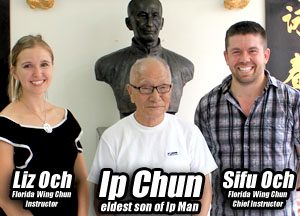 One of the many reasons why I love to train at this particular school is because of the authenticity of the Wing Chun that is being taught. There’s no place else like it, and there’s no other place that you can learn wing Chun from one person that’s been certified under multiple lineages. So far what I’ve gained and hope to continue gaining is the realness of Wing Chun and how the principles of Wing Chun affect more than just a persons martial art aspect, but also different aspects of every day life and activities. I’ve also learned and have gained many different techniques that is and will be always important to any true martial artist.
One of the many reasons why I love to train at this particular school is because of the authenticity of the Wing Chun that is being taught. There’s no place else like it, and there’s no other place that you can learn wing Chun from one person that’s been certified under multiple lineages. So far what I’ve gained and hope to continue gaining is the realness of Wing Chun and how the principles of Wing Chun affect more than just a persons martial art aspect, but also different aspects of every day life and activities. I’ve also learned and have gained many different techniques that is and will be always important to any true martial artist.  Lastly, one thing I’ve gained since I’ve signed up at Sifu Och’s Wing Chun is the love and care that he provides and all of his students. Anyone who signs up will be able to experience the greatness and directness and effectiveness of Wing Chun. They will also be able to see how family oriented the school and the atmosphere is. They will also how hard and dedicated all the students are to their training.
Lastly, one thing I’ve gained since I’ve signed up at Sifu Och’s Wing Chun is the love and care that he provides and all of his students. Anyone who signs up will be able to experience the greatness and directness and effectiveness of Wing Chun. They will also be able to see how family oriented the school and the atmosphere is. They will also how hard and dedicated all the students are to their training.






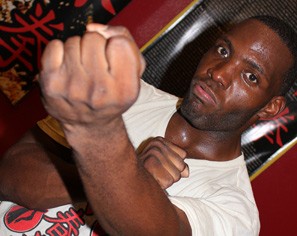







 Where does one begin divulging the effervescent determination surrounding my growth in Wing Chun under the Sifu Och lineage. As well as the growth in myself. Ultimately the scrupulous truth would be in my young age of six when I as many martial artist has divulged found my passion for martial arts watching Enter the Dragon featuring Bruce Lee.
Where does one begin divulging the effervescent determination surrounding my growth in Wing Chun under the Sifu Och lineage. As well as the growth in myself. Ultimately the scrupulous truth would be in my young age of six when I as many martial artist has divulged found my passion for martial arts watching Enter the Dragon featuring Bruce Lee. Fast forward to the important part, the year 2009 when the film Ip Man was released in the united states red box system, I was helping my grandpa move when he out of kindness decided to rent a movie for me and my brother. He casually strolls in and I will never forget what he said “you Know you guys have worked real hard and I wanted to show a small gesture of appreciation, I know you both love martial arts so I saw a film on Bruce lee’s master in red box and thought it would be interesting for you to check out.”
Fast forward to the important part, the year 2009 when the film Ip Man was released in the united states red box system, I was helping my grandpa move when he out of kindness decided to rent a movie for me and my brother. He casually strolls in and I will never forget what he said “you Know you guys have worked real hard and I wanted to show a small gesture of appreciation, I know you both love martial arts so I saw a film on Bruce lee’s master in red box and thought it would be interesting for you to check out.” In my years of martial arts fanaticism and study I have trained in my styles of course seeing as I have landed in Sifu Och Wing Chun never were for very long. The complete breakdown would be six months of high school wrestling, a month of Muay Thai, a month of Goju-Ru karate, and Six months of Sport Judo.
In my years of martial arts fanaticism and study I have trained in my styles of course seeing as I have landed in Sifu Och Wing Chun never were for very long. The complete breakdown would be six months of high school wrestling, a month of Muay Thai, a month of Goju-Ru karate, and Six months of Sport Judo. Sifu Och Wing Chun has and will always be a blessing to me, it’s not simply a school to learn how to defend yourself, for me it’s so much more. To elaborate in greater detail and analysis it’s a family that helps me when im struggling, it’s a support group to help me further grow as a martial artist however the training only took me so far and let’s be honest it wasn’t very far at all. I still had nervousness in fighting situations or even in confrontational situations.
Sifu Och Wing Chun has and will always be a blessing to me, it’s not simply a school to learn how to defend yourself, for me it’s so much more. To elaborate in greater detail and analysis it’s a family that helps me when im struggling, it’s a support group to help me further grow as a martial artist however the training only took me so far and let’s be honest it wasn’t very far at all. I still had nervousness in fighting situations or even in confrontational situations. When I began a little over a year ago I was nervous when entering a physical confrontation however from the moment I joined (Like literally Day One) I was put into wrist vs wrist. This automatic exposure with the accommodations of the further advanced students I could not only overcome the fear but also conquer it.
When I began a little over a year ago I was nervous when entering a physical confrontation however from the moment I joined (Like literally Day One) I was put into wrist vs wrist. This automatic exposure with the accommodations of the further advanced students I could not only overcome the fear but also conquer it.
 Learning to love Wing Chun was a struggle at first. Because some of the techniques were contrary to my first love of Karate, it felt a little bit like betrayal. I had been training Karate for ten years! For the past five years, I had been teaching and instructing the art that I love. Now suddenly I was at the bottom of the food chain, knowing absolutely nothing about Wing Chun – it was a hard transition to say the least, but one well worth making. I was soon able to respect and appreciate each art for their differences, and have started down the road of incorporating them both.
Learning to love Wing Chun was a struggle at first. Because some of the techniques were contrary to my first love of Karate, it felt a little bit like betrayal. I had been training Karate for ten years! For the past five years, I had been teaching and instructing the art that I love. Now suddenly I was at the bottom of the food chain, knowing absolutely nothing about Wing Chun – it was a hard transition to say the least, but one well worth making. I was soon able to respect and appreciate each art for their differences, and have started down the road of incorporating them both. My overall health and fitness has improved including strength and endurance. My mental health improved as well, relieving the stresses of daily life in class every night. This year I started a very emotionally draining internship dealing with girls that have been sex trafficked. Wing Chun allowed me to refrain from going insane and relieve my frustration.
My overall health and fitness has improved including strength and endurance. My mental health improved as well, relieving the stresses of daily life in class every night. This year I started a very emotionally draining internship dealing with girls that have been sex trafficked. Wing Chun allowed me to refrain from going insane and relieve my frustration.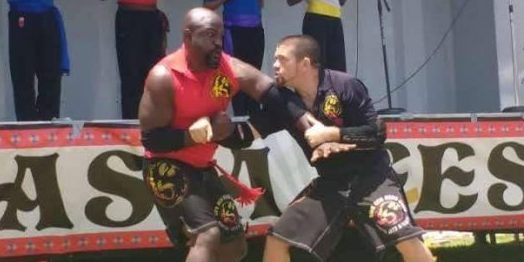
 Once the speakers were ready, it was the Sifu Och Wing Chun Kung Fu group turn to go on stage at the Tampa Bay Asia Fest. They started with the Wing Chun first form,
Once the speakers were ready, it was the Sifu Och Wing Chun Kung Fu group turn to go on stage at the Tampa Bay Asia Fest. They started with the Wing Chun first form,  Immediately after this they started fighting in Chi Sau reaction sparring. This was without any choreography. It was evident nothing was staged with these two as they demonstrated their free style reaction sparring, within
Immediately after this they started fighting in Chi Sau reaction sparring. This was without any choreography. It was evident nothing was staged with these two as they demonstrated their free style reaction sparring, within  of the crowds walking inside of Tampa Bay Asia Fest. Instructor Garret Brumfield and Master Instructor Sifu Justin Och both train Dragon Pole (luk dim boon kwan) and Chi Sau sparring while onlookers wait and watch in anticipation.
of the crowds walking inside of Tampa Bay Asia Fest. Instructor Garret Brumfield and Master Instructor Sifu Justin Och both train Dragon Pole (luk dim boon kwan) and Chi Sau sparring while onlookers wait and watch in anticipation. Sifu Och Wing Chun kung fu group stopped and ran over to watch in support. The Mt. Song Shaolin kung fu group put on an amazing lion dance and Kung Fu weapon demonstration. This demonstration was most noteworthy by the graceful and fluid movements of their students. Not withholding the final demonstration which consequently left the audience stunned. One of the students bared his body to the breaking of wooden sticks. With one last strike to his inner thigh while he was upside down (making it appear as though his groin would get the blunt of the blow) his thigh took the break instead.
Sifu Och Wing Chun kung fu group stopped and ran over to watch in support. The Mt. Song Shaolin kung fu group put on an amazing lion dance and Kung Fu weapon demonstration. This demonstration was most noteworthy by the graceful and fluid movements of their students. Not withholding the final demonstration which consequently left the audience stunned. One of the students bared his body to the breaking of wooden sticks. With one last strike to his inner thigh while he was upside down (making it appear as though his groin would get the blunt of the blow) his thigh took the break instead.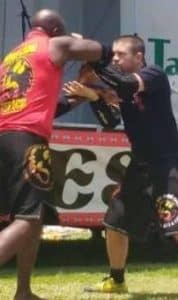
 Their engaging performances, following years demonstrations, of this Southern Shaolin Kung Fu style have earned them the title. We we’re honored to demonstrate at the Tampa Bay Asian Fest. This great event will showcase authentic southern shaolin Wing Chun Kung Fu. Broadening audiences horizons on the benefits and practicality of the ancient art of kung fu. With the Mt. Song Shaolin Kung Fu and the Sifu Och Wing Chun they will provide guests with great Kung Fu entertainment. The up coming years at Tampa Bay Asia Fest will have some of the best kung fu entertainment and food around! Don’t miss Tampa Bay Asia Fest next year, you will regret it if you do.
Their engaging performances, following years demonstrations, of this Southern Shaolin Kung Fu style have earned them the title. We we’re honored to demonstrate at the Tampa Bay Asian Fest. This great event will showcase authentic southern shaolin Wing Chun Kung Fu. Broadening audiences horizons on the benefits and practicality of the ancient art of kung fu. With the Mt. Song Shaolin Kung Fu and the Sifu Och Wing Chun they will provide guests with great Kung Fu entertainment. The up coming years at Tampa Bay Asia Fest will have some of the best kung fu entertainment and food around! Don’t miss Tampa Bay Asia Fest next year, you will regret it if you do.









































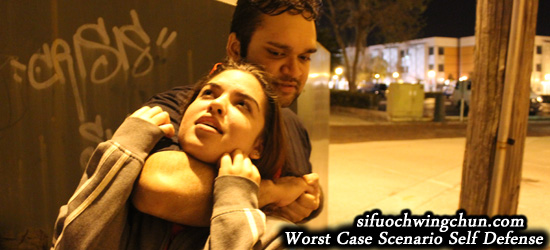
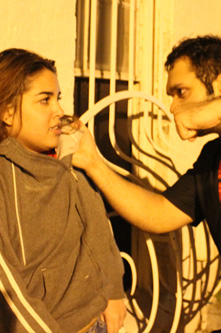 “
“ When its
When its  You must train for all ranges of possibilities to deal with low and high level threats. This is just one difference in the reality of worst case scenario self defense training under a instructor. Most of these questions expect you to be truly honest with yourself and what kind of instruction your receiving. There is a huge difference between Martial Arts and Realistic survival of a worst case scenario self defense.
You must train for all ranges of possibilities to deal with low and high level threats. This is just one difference in the reality of worst case scenario self defense training under a instructor. Most of these questions expect you to be truly honest with yourself and what kind of instruction your receiving. There is a huge difference between Martial Arts and Realistic survival of a worst case scenario self defense.
 Military and Special Forces train in Close Quarter Combat to quickly take down enemies. Private citizens can learn it as well. To learn such a skill a person must undergo rigorous training. Training that involves using sudden, overwhelming, and relentless application of violence to give enemy no real chance to respond.
Military and Special Forces train in Close Quarter Combat to quickly take down enemies. Private citizens can learn it as well. To learn such a skill a person must undergo rigorous training. Training that involves using sudden, overwhelming, and relentless application of violence to give enemy no real chance to respond. Overall, our school focuses on teaching real Ip Man Wing Chun Kung Fu striking methods, controlling positions, locks, throws, grabs and deflections.
Overall, our school focuses on teaching real Ip Man Wing Chun Kung Fu striking methods, controlling positions, locks, throws, grabs and deflections.
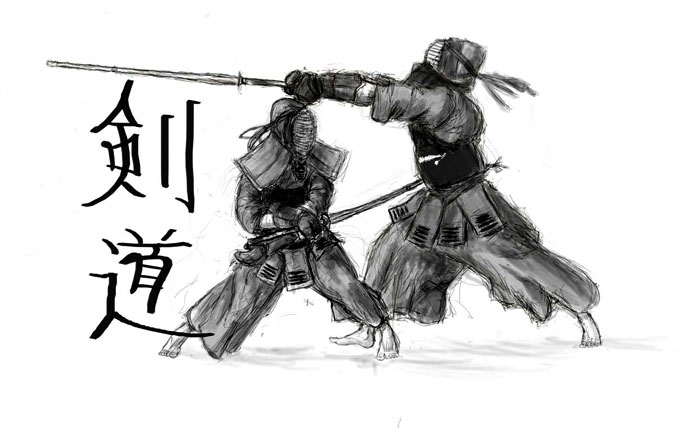

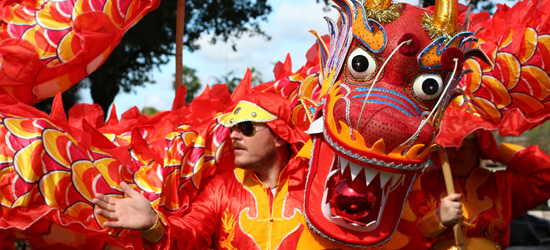
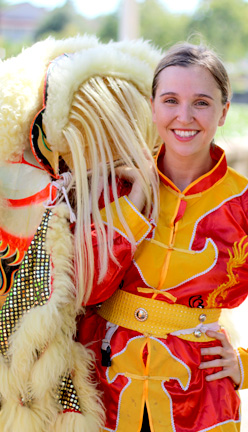 Welcome to LakelandKungFu.com and SifuOchWingChun.com, this is the official site of the Sifu Och Wing Chun Kung Fu Institute. We specialize in Southern Chinese Kung Fu and are a Asian Lion Dance and Martial Art troupe headquartered in Central Florida, Lakeland Polk County. Our Kung Fu school trains people in realistic protection using Traditional Martial Arts while providing corporations and weddings in
Welcome to LakelandKungFu.com and SifuOchWingChun.com, this is the official site of the Sifu Och Wing Chun Kung Fu Institute. We specialize in Southern Chinese Kung Fu and are a Asian Lion Dance and Martial Art troupe headquartered in Central Florida, Lakeland Polk County. Our Kung Fu school trains people in realistic protection using Traditional Martial Arts while providing corporations and weddings in 





